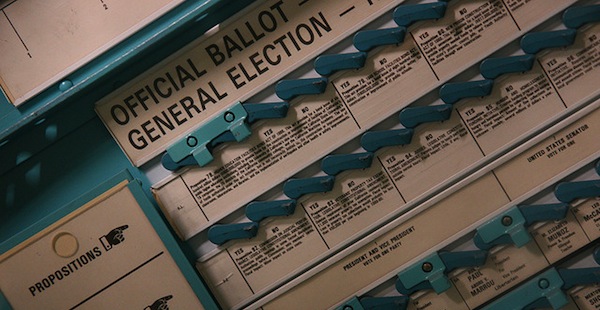
Events are a cornerstone of journalism, whether planned or unexpected. Whether it’s a World Series run or a flood, the result is often a traffic bump for news sites.
This especially seems to be the case for Patch, which saw substantial traffic increases to many of its sites last week as a result of the November elections. That’s on a night filled not with senators or congressmens, but aldermen, mayors, school boards, and sheriffs.
While AOL would not give out hard counts on uniques, anecdotally, they said traffic was up over 50 percent from baseline in regions with the most noteworthy elections, including in states like Ohio, Minnesota, and Pennsylvania. Reader comments were up 40 percent and mobile traffic increased by 13 percent. All told, election coverage increased traffic to Patch by 17 percent, spokeswoman Janine Iamunno told me.
To a certain degree, this isn’t surprising; no matter how unsexy the race for local dog catcher might be, reporting on local and state elections represent a kind of basic utility to readers. But events like election night are of particular importance to a organization like Patch, which starts at a major marketing disadvantage in most markets, where it lacks the downtown building, the 100-year-old name, and the dozens of corner newspaper boxes. All of which the local daily probably has. Building local online-only brands is a challenge, and big events — the kind that get people googling “county assessor results Middlesex County” — can be an occasion for someone like Patch to get in front of readers.
“The power users, the regular users know to come with us,” Patch editor-in-chief Brian Farnham told me. “Much as with Hurricane Irene, for instance, we get a lot of new users who are naturally inclined to go look for the most timely information.”
Irene prompted an analogous spike in traffic in September, when it left a swath of wreckage across the American east coast. The entire Patch network saw a 75 percent jump in traffic the last weekend of September as the storm’s reach extended into towns covered by Patch. Many of the Patch sites directly impacted by the hurricane saw five times normal traffic.
It may be a limited set of data, but these two events would seem to indicate Patch is filling at least some of the needs of what we might call local news hunters — people searching out specific local news information at a time when it’s important to them. That’s distinct from the news grazer, who has a set of specific sites he or she reads regularly, whether national (say, CNN), topic-specific (Politico), or local (The Boston Globe). Farnham told me those seekers are coming to Patch thanks to a mix of good SEO, Twitter, and old-fashioned word of mouth.
But that trend also likely speaks to the areas Patch finds itself in, where the sites have a beachhead in territory that could be covered by larger media outlets. In many cases they’re not going head-to-head with larger papers, public radio, or TV. My fair city, the friendly and Fluff-proud Somerville, Mass., has a Patch site and sits squarely in metro Boston. Somerville is a good test case because of the concentration of media in the area: The Boston Globe, The Boston Herald, WBUR, Patch, The Somerville Journal (part of the Wicked Local network), as well as a smattering of local TV news sites.
On election day, Somerville likely had a lot in common with plenty of municipal elections around the country: incumbent-filled races for city leadership and an unopposed mayor seeking another term. Low-turnout — nothing dramatic. It shouldn’t be any wonder Patch sites saw a traffic bump: By far, Somerville Patch and Wicked Local Somerville, the two most prolific local news sites, had the most persistent coverage of the races in my town, featuring full candidate profiles, election guides, photo galleries, and blogs for updating election results. By contrast, the Globe’s Boston.com, under its Your Town section, had modest coverage of Somerville’s races with a by-the-books results story being the stand-out.
Farnham said doing the legwork up to election day is another way to boost the audience. If voting day comes around and you know little about the candidates, you may find your way to your local Patch’s candidate profiles. And once you do that, you’re more likely to check back later for results.
All of which is good for Patch — but elections, like hurricanes, quickly subside, and there’s no guarantee any of those readers will stick around. Drive-by readers are a fact of life for all news sites — even the ones with the big buildings downtown, for whom the ebb and flow of single-copy newsstand sales around a big event is very familiar. All news organizations know a fair chunk of their visitors come by once, never to return again, but if you’re a metro paper or site with a national audience, the drive-bys can fit well into the larger audience mix. That’s where Patch sites face a unique challenge: their scope. If you’re a Patch site covering a town between 30,000-40,000 people, there aren’t a ton of potential regular readers around — which makes converting drive-bys into long-timers is even more important.
Image by willivolt used under a Creative Commons license.